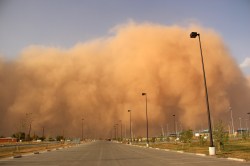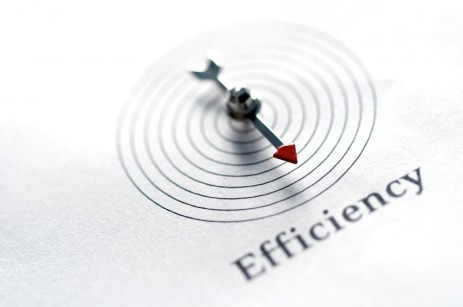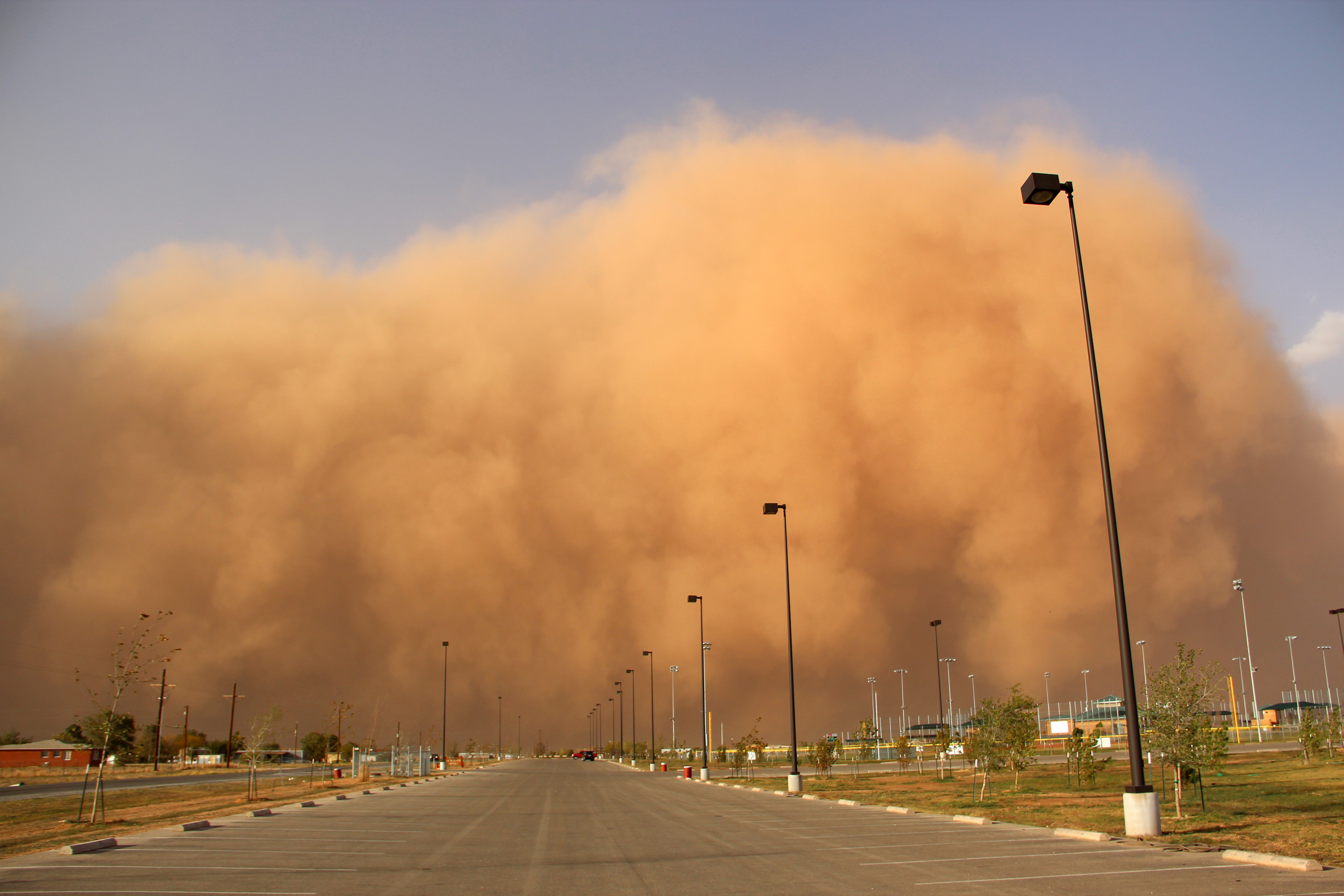
ShutterstockA monstrous dust storm called a haboob sweeps into Phoenix. It only looks like the apocalypse.
William deBuys, author of A Great Aridness: Climate Change and the Future of the American Southwest, wrote the latest screed about why Phoenix is doomed, this time in an op-ed article in Grist, the Los Angeles Times, and other publications. The best-known previous blast was Andrew Ross’ 2011 book Bird on Fire: Lessons from the World’s Least Sustainable City. As a lifelong resident of Phoenix, author of the book Phoenix in Perspective, and a frequent commentator on our desert city, I have had the privilege of debating both Ross and deBuys. While both have many important points about the future of America’s urban places, I must point out they both continue to misunderstand a great deal about my city.
It comes as no surprise to those of us who live here in the Valley of the Sun that it’s hot and that it is likely to get hotter. In Phoenix, more than any other American city I know, we debate our future constantly. Maybe that’s because we fully realize that Phoenix is built in a place with geographical challenges. In fact, every system that supports this city was built in recognition of those challenges. Balmier places have taken for granted that their hospitable climate will continue into the future, so a place like Atlanta is greatly challenged when rainfall decreases by 15 or 20 percent. Phoenix, on the other hand, depends virtually not at all on rainfall occurring within its geographic proximity.
Let’s look at deBuys’ criticisms of Phoenix and its future:
First, he notes that heat waves in Europe can kill tens of thousands of people. Those heat waves usually represent Fahrenheit temperatures in the high 90s or maybe even 100. Phoenix last year had 14 days greater than 110 degrees F. How many people were killed by this unimaginable heat? The city recorded 21 heat-caused deaths (and an additional 22 heat-related deaths) during the weeks above 110. Tragic, yes. Thousands, no. Phoenix is built to deal with very high temperatures. Yes, temperatures may go even higher in the future, but we acknowledge and even expect that.
Second indictment: The “heat island” effect is making Phoenix hotter because it does not cool off at night like it once did. DeBuys is correct. Over the last decade Arizona State University has been researching the heat island and developing ways to mitigate its effects through landscape, building materials, and energy efficiency. We have not fully solved the problem but all the evidence leads us to conclude that the heat-island effect is a plateau that levels off in the range of today’s current temperatures, and is a problem we can manage.
Third count: It takes a lot of electricity to support Phoenix. Indeed, air conditioning consumes significant electricity but the state of Arizona (with nearly 70 percent of the population being in metro Phoenix) ranks 45th out of the 50 states in per capita energy consumption. The stark reality is that it takes less energy to cool than it does to heat. U.S. migration to the Sunbelt has lowered per capita energy consumption. Another fact: In warm places we do not burn diesel oil in the basement to modify temperature. The Center for Climate Strategies notes that Arizona emits about 30 percent less carbon per person than is the average in the United States.
The next and the most common indictment of Phoenix is that there’s no water so people shouldn’t live in such a desert city. DeBuys criticizes Phoenix for its reliance on Colorado River water and water from the mountains of central Arizona. Similar criticisms can be leveled at every city in the arid Southwest — especially Los Angeles. Most Western water managers will tell you that Phoenix has a water supply to support its future growth more robust than that of Los Angeles, San Diego, Las Vegas, or Denver. Half the water that comes to Phoenix is still being used for agriculture. Agriculture is being retired here and that water is slowly being converted to other uses.
DeBuys is right about another point however: In order to build the Central Arizona Project, Arizona had to agree to allow California to have a more senior water right. This historical fact comes as no surprise n to the people of Phoenix. Because of that lower seniority, nearly 4 million acre feet of water (about four years’ worth of Phoenix urban use) have been “banked” underground to protect against future drought. Is that enough? Probably not, but it’s more “water banking” than has been completed by any other city in the world.
Next, deBuys goes after the huge “haboobs” that Phoenix has seen in the last few years. These massive dust storms are indeed spectacular, unpleasant meteorological events that attract much national news awe. But they are much less of a threat to human existence than hurricanes or tornadoes that plague other parts of the country. And the prime reason we get such huge clouds of dust is because of all the farming south of Phoenix that has tilled up the natural desert. As farming diminishes, so will the haboobs. However dirty the storms are, they are not close to the problems presented by earthquakes or rising sea level as a consequence of climate change.
DeBuys’ final point may be his most trenchant. He notes that Arizona seems often to be politically dysfunctional. Local elected officials rail against government, public-land ownership, “the feds,” and immigration. Actually, the cities of metro Phoenix all have relatively stable, professionally managed non-partisan government. When he characterizes Phoenix as having “winner take all politics,” he overstates reality, but I’ll give him a point taken. But such is the politics of all of the United States in the present day. Solving problems is not high on politicians’ agendas. Scoring points is. Political dysfunction is a legitimate threat to the future, not just to Phoenix but to U.S. cities in general. It takes a belief in government and recognition for its capacity to solve problems to sustain cities. A city is, after all, a gigantic public/private partnership.
Yet I remain hopeful even on this last count. While Phoenix politics are sometimes zany, our city has been built by people who understand government was not the problem but the solution. We need only to turn on the water faucet to be reminded of that fact.



